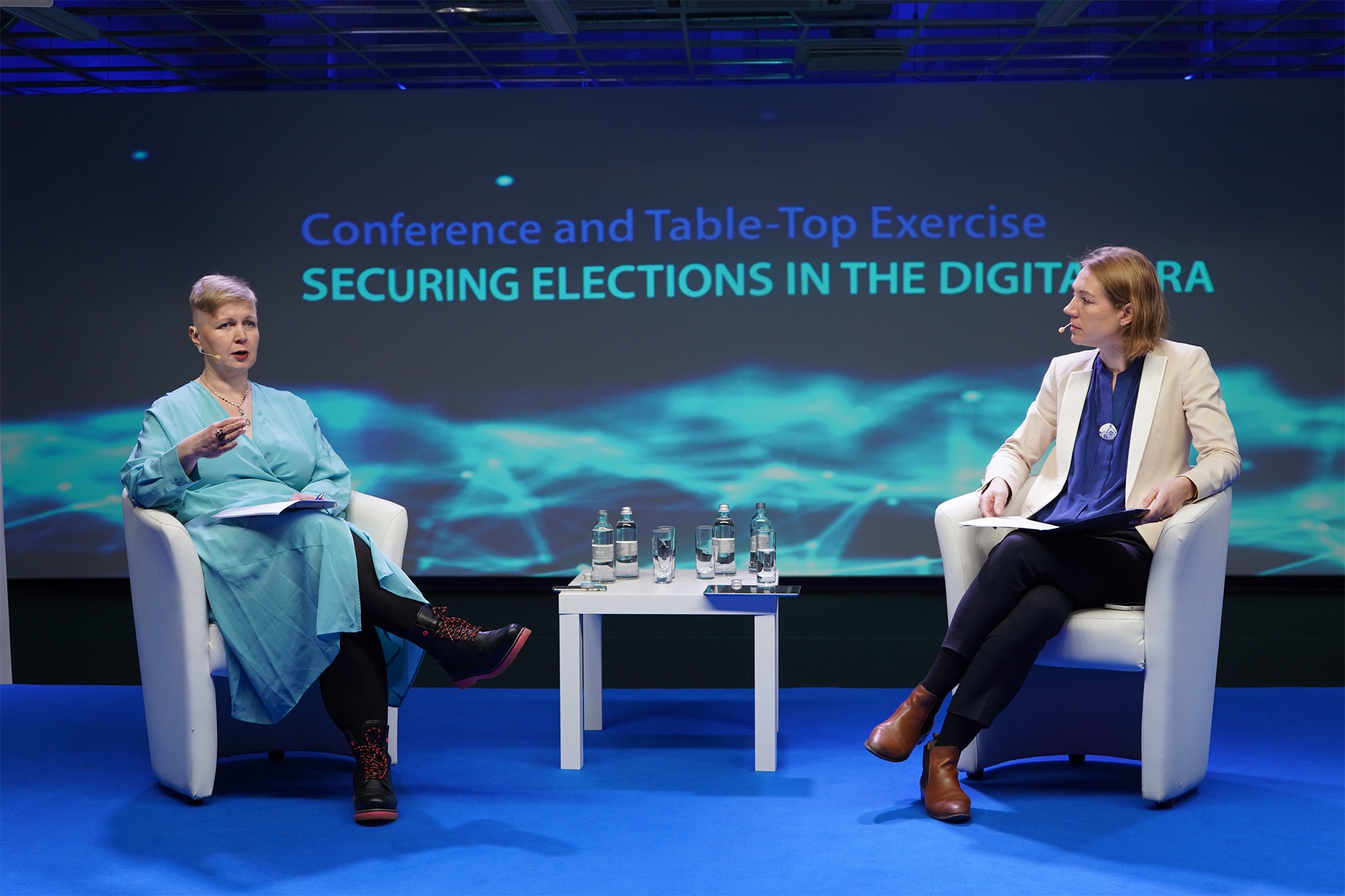
Securing elections in the digital era as a trust-building endeavour
In parallel with the long-anticipated and widely followed US Presidential election, 2020 was an important year also for many democracies in Europe. In the wake of the global Covid-19 pandemic, electoral management bodies across the world were pushed to re-examine the strategic planning and decision-making process that go into running an election.
For many election officials, this has prompted a review of their own systems, and a search for solutions to ensure the resilience of their voting process. The democratic right to vote needs to be reinforced while maintaining safety. Therefore, the electoral community must consider all the tools at its disposal, including technology, to find innovative solutions to novel problems.
Elections are a crucial cornerstone for the functioning of any representative democracy. But while technology provides a myriad of possibilities for facilitating the election process, it comes with its own set of risks.
Recognising this, e-Governance Academy held a virtual conference and table-top exercise to provide a platform for tackling the topical issue of securing elections in the digital era.
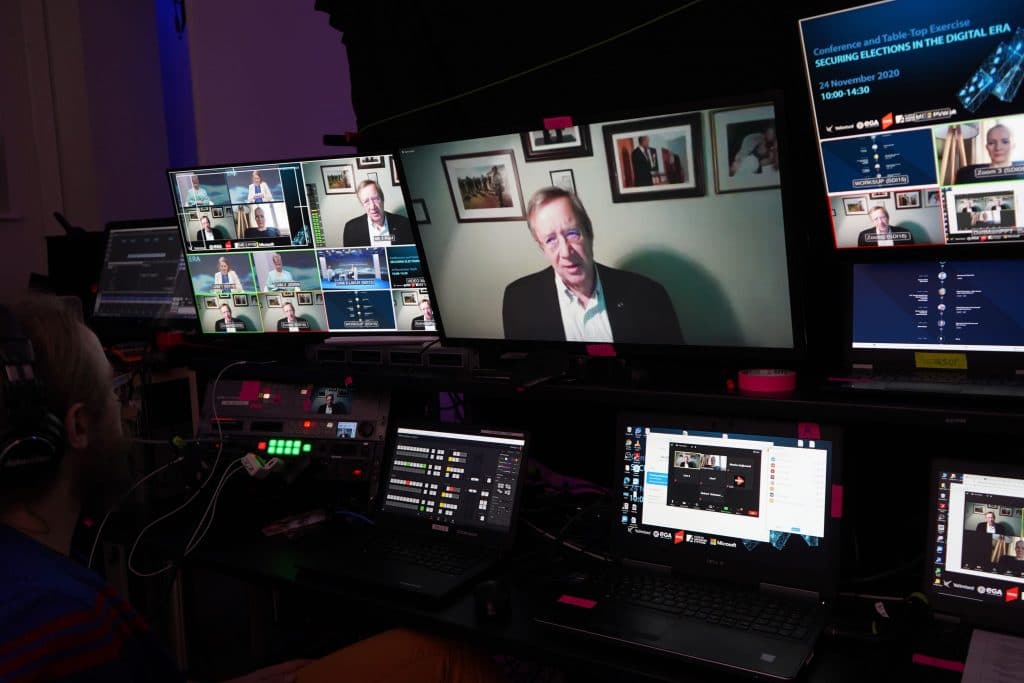
Photo: Former President of Estonia Toomas Hendrik Ilves by Anu Vahtra-Hellat, eGA
What are we securing?
According to the former President of Estonia Toomas Hendrik Ilves, the focus often tends to be on election day and securing the digital means by which voting is conducted. However, we must not forget that elections are a manifestation of the whole democratic process. Moving the focus from election interference to democracy interference, as Mr. Ilves phrased it, allows us to take into account all threats that culminate on election day – from the manipulation of vote tabulations to conducting disinformation campaigns.
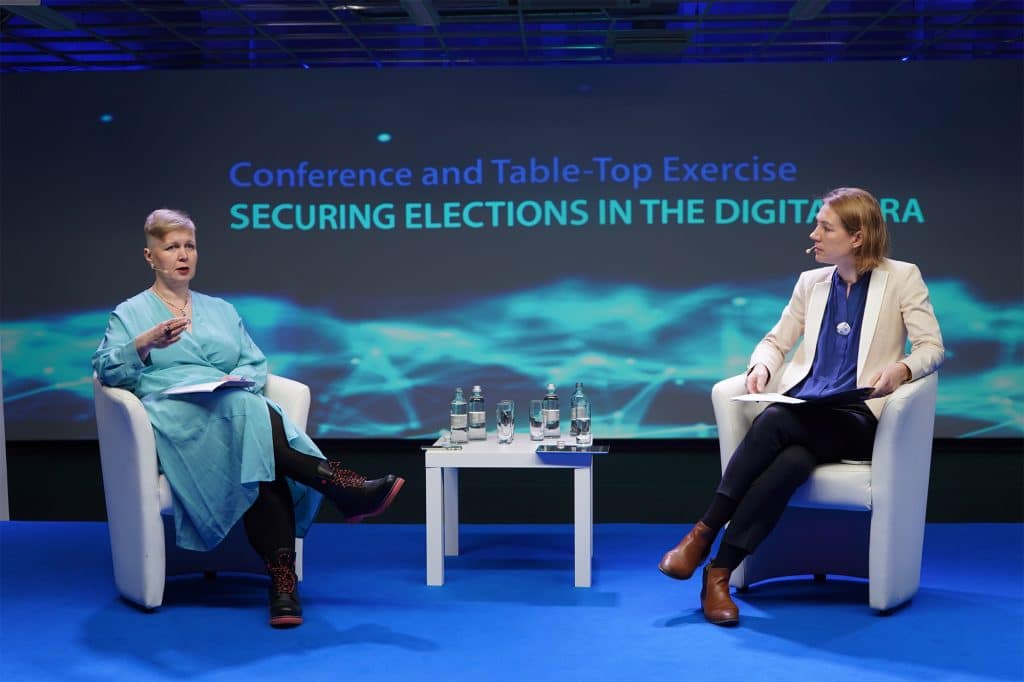
Photo: Liisa Past and Merle Maigre by Helen Aasa, eGA
Liisa Past, Head of Cyber Security Business Development at Cybernetica, echoed the same idea when stating that election interference “Is about affecting the election lifecycle rather than just one vote.” Effective risk management should indeed start with securing the smallest domain, from which efforts can be expanded outwards. To conceptualise this, Past outlined the following levels of risk management:
- The accurate recording of the voters’ political will
- The election technology
- The facilitators of public debate, which has moved from the “public square” to virtual space
- The information environment in which opinions are distributed and channelled.
Emerging challenges go beyond the election process
A shift in focus from election day, to the whole election lifecycle more broadly, enables to consider the wide spectrum of threats that democracies face today. Oliver Kask, Head of the National Electoral Committee of Estonia, summarised these challenges under the interrelated questions of trust, disinformation and resilience.
Oliver Kask noted that it is no longer possible to conduct elections without any digital tools. “The possibilities to use digital technologies widen every month, every week. We would not get the best out of IT solutions if we don’t start finding means to pursue the opportunities we already have right now. Yet, we have to consider the safety of the solutions still under construction,” he warned.
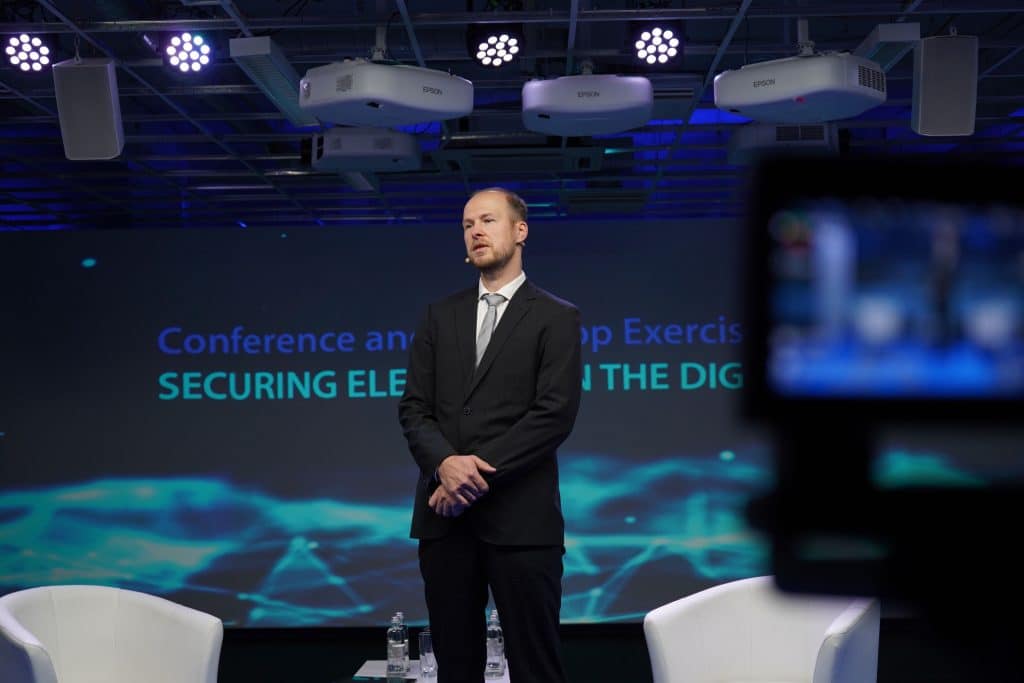
Photo: Oliver Kask by Helen Aasa, eGA
For digital technology to enhance participation and the voting experience, citizens need to trust the election technology, as well as the electoral process as a whole. As this form of trust is connected to wider social confidence in the country’s democratic system, it is the role of governments to tackle polarisation beyond the election process.
“No government or society can be early enough to ensure the trust and resilience in their election system,” warns Marietje Schaake, Director of International Policy at the Cyber Policy Centre at Stanford University. In order to secure the democratic process, “It is crucial to establish rules and standards in a non-partisan manner before polarisation gets too deep,” she continues.
All conference speakers underlined, in one way or another, that the maintenance of trust in a democracy is closely linked to transparency of electoral processes.
Claiming responsibility in a constantly evolving field
While minimising social polarisation may be a task for the government, corporations play a critical role in the ongoing challenge ofcountering false data. Dr Robert Krimmer, Professor of e-Governance at University of Tartu, emphasised how digital technology has changed the way we consume and distribute information. In light of this, Krimmer highlighted the danger of “fake news bubbles”, which are difficult to break and replace with unbiased information.

Photo: Robert Krimmer, Screenshot
Large social media platforms have the power to influence people’s attitudes and preferences in a way that governments do not. The efforts by the likes of Facebook and Twitter to map and label false “facts” is but one example, brought forward by Oliver Kask, of how responsibility can be claimed by the private sector. Such trend in increasing interventions must, however, be balanced in order to protect the basic freedom of expression.
By his part, Jan Neutze, Senior Director for Digital Diplomacy at Microsoft, outlined how the firm offers journalists and human rights defenders access to security tools, to safeguard them against hacking. Believing that tech companies have the responsibility to help protect democracy, they want their customers to trust the technology supporting democratic processes.

Photo: Jan Neutze, Screenshot
What’s more, cooperation should be expanded across sectors and elevated to the national and international level, emphasised Marina Kaljurand, Member of the European Parliament. This is not only important for sharing best practices. Enhanced cooperation is vital to ensure our preparation in the face of emerging threats, and to form a common response in defence of our democratic systems.
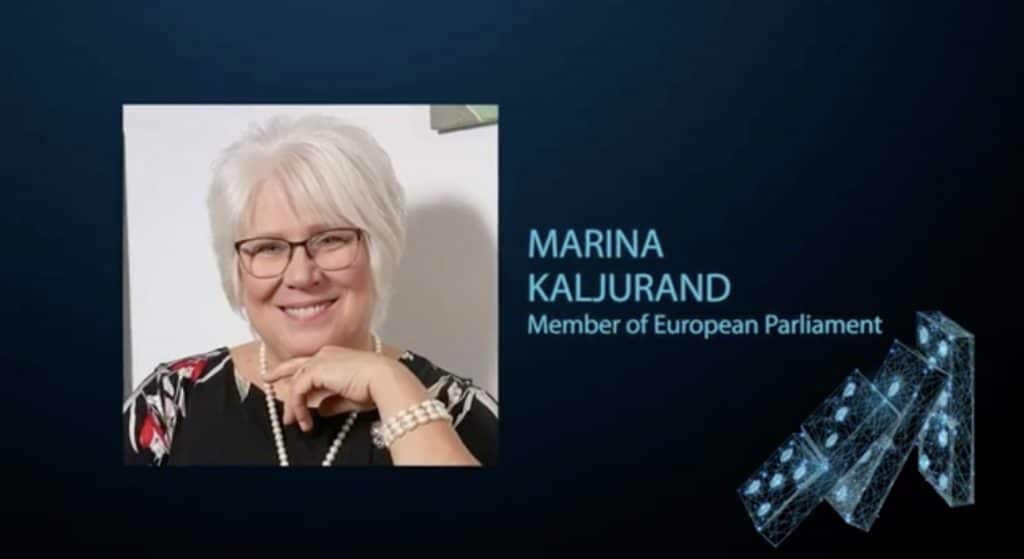
Photo: Marina Kaljurand, Screenshot
Securing elections is a collective effort
This last takeaway was best demonstrated through the interactive table-top cyber exercise, facilitated by CybExer Technologies.
CybExer took participants through a cyber crisis in a simulated election process, allowing them to experience the complexity of tackling election threats first-hand. The measurement and illustration of participants’ reactions revealed differences in individual perceptions. The organizers thereby underlined the importance of having a common decision-making framework in place, prior to the election process.
Taken together, the conference served as a reminder that democracies are similar in regularly organizing elections but vary in the extent of their reliance on digital technologies. Beyond technical security, this requires enhancing the resilience of our democratic systems, which is achieved through the healthy maintenance of trust and transparency.
Have you missed the conference or feel like re-watching it?
The discussions are available for re-watch below!
















